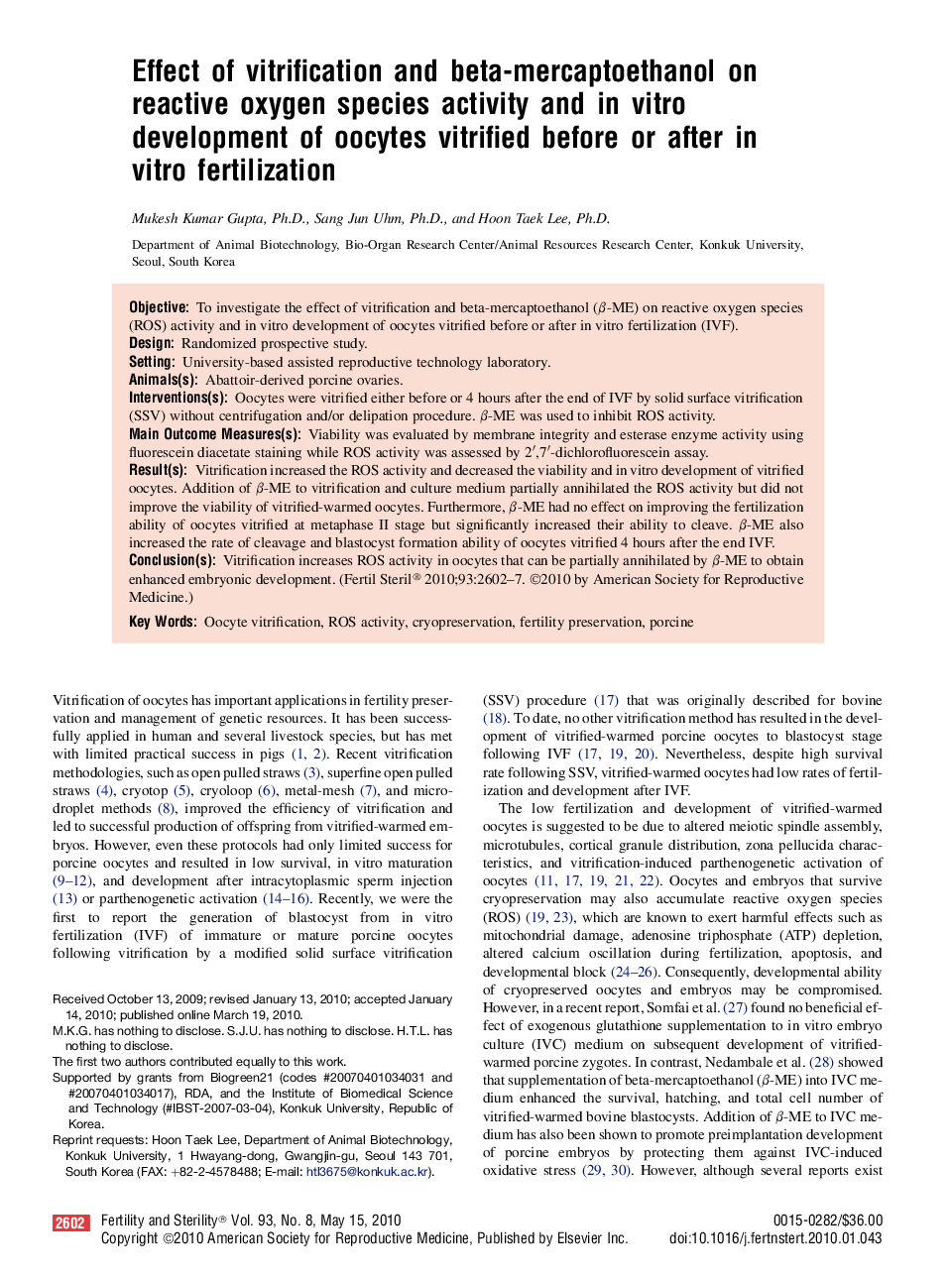| Article ID | Journal | Published Year | Pages | File Type |
|---|---|---|---|---|
| 3939676 | Fertility and Sterility | 2010 | 6 Pages |
ObjectiveTo investigate the effect of vitrification and beta-mercaptoethanol (β-ME) on reactive oxygen species (ROS) activity and in vitro development of oocytes vitrified before or after in vitro fertilization (IVF).DesignRandomized prospective study.SettingUniversity-based assisted reproductive technology laboratory.Animals(s)Abattoir-derived porcine ovaries.Interventions(s)Oocytes were vitrified either before or 4 hours after the end of IVF by solid surface vitrification (SSV) without centrifugation and/or delipation procedure. β-ME was used to inhibit ROS activity.Main Outcome Measures(s)Viability was evaluated by membrane integrity and esterase enzyme activity using fluorescein diacetate staining while ROS activity was assessed by 2′,7′-dichlorofluorescein assay.Result(s)Vitrification increased the ROS activity and decreased the viability and in vitro development of vitrified oocytes. Addition of β-ME to vitrification and culture medium partially annihilated the ROS activity but did not improve the viability of vitrified-warmed oocytes. Furthermore, β-ME had no effect on improving the fertilization ability of oocytes vitrified at metaphase II stage but significantly increased their ability to cleave. β-ME also increased the rate of cleavage and blastocyst formation ability of oocytes vitrified 4 hours after the end IVF.Conclusion(s)Vitrification increases ROS activity in oocytes that can be partially annihilated by β-ME to obtain enhanced embryonic development.
